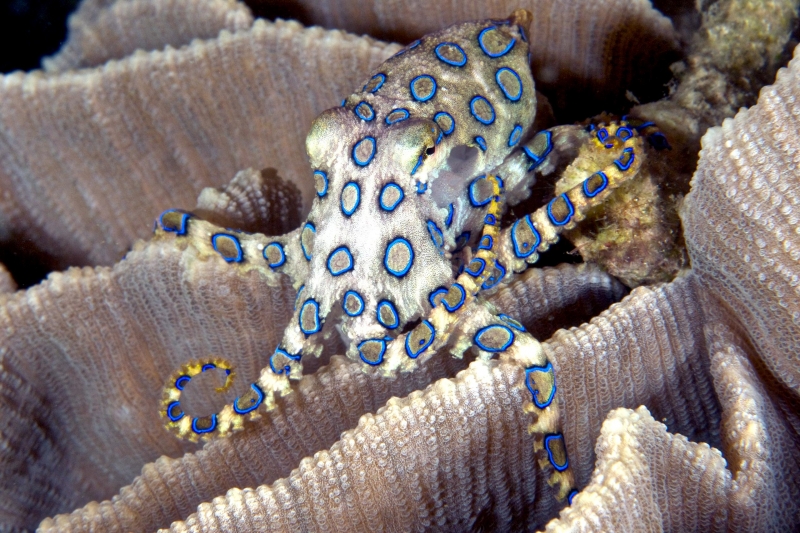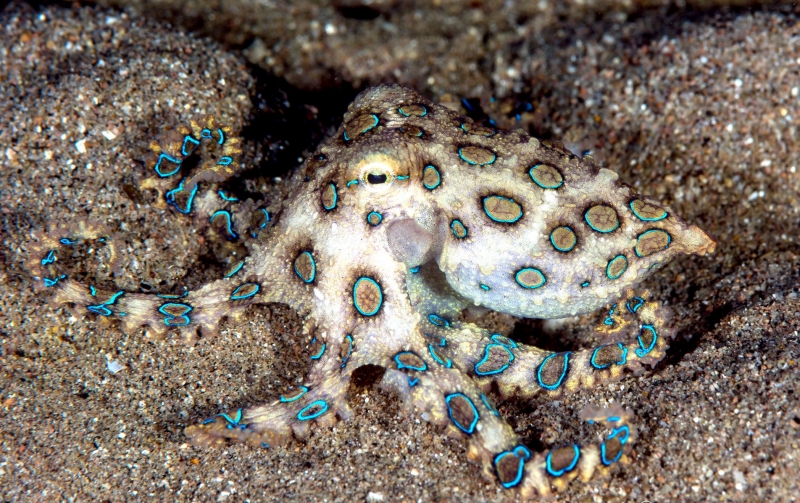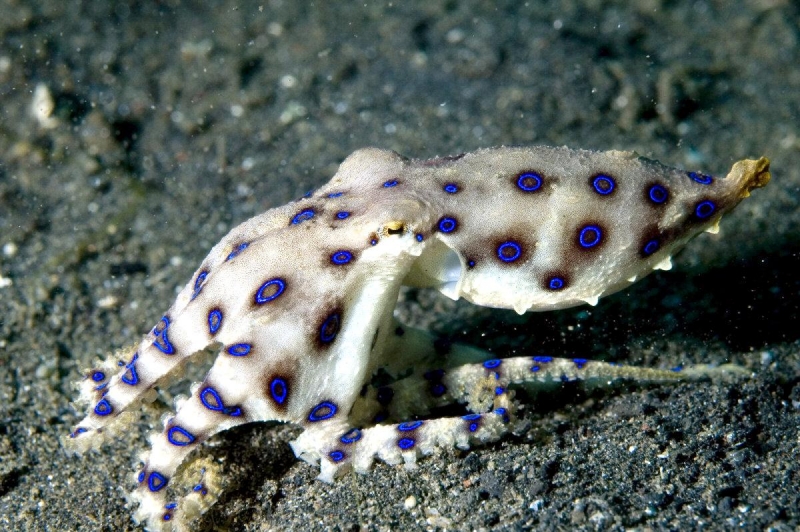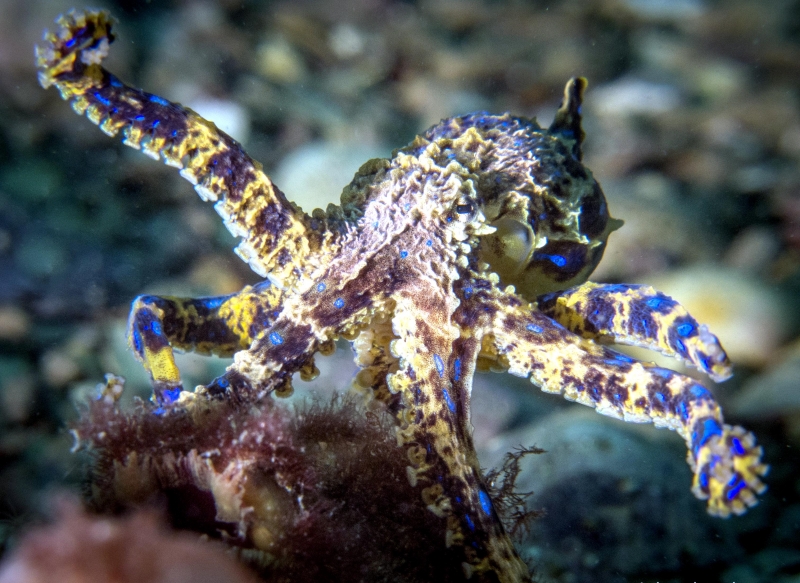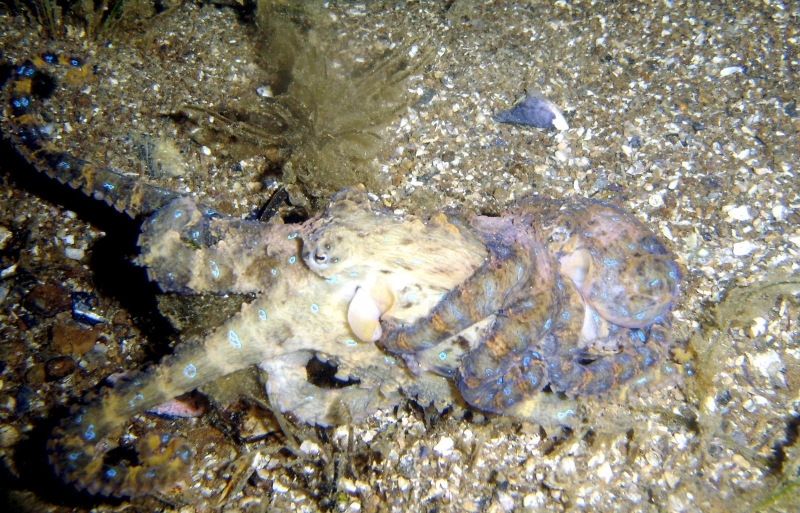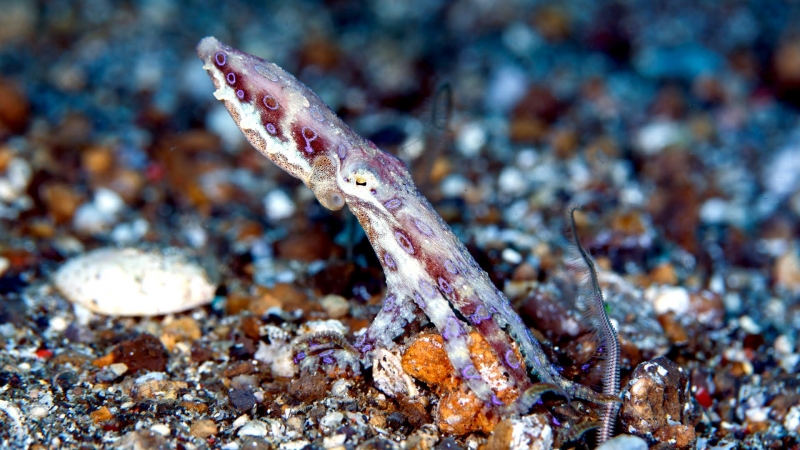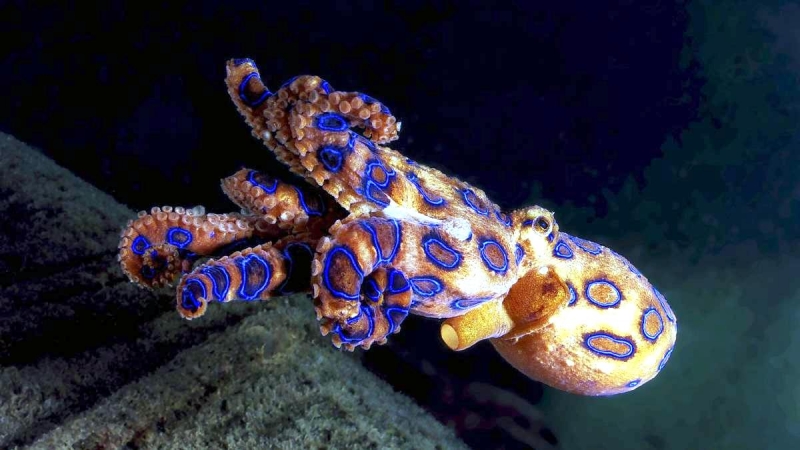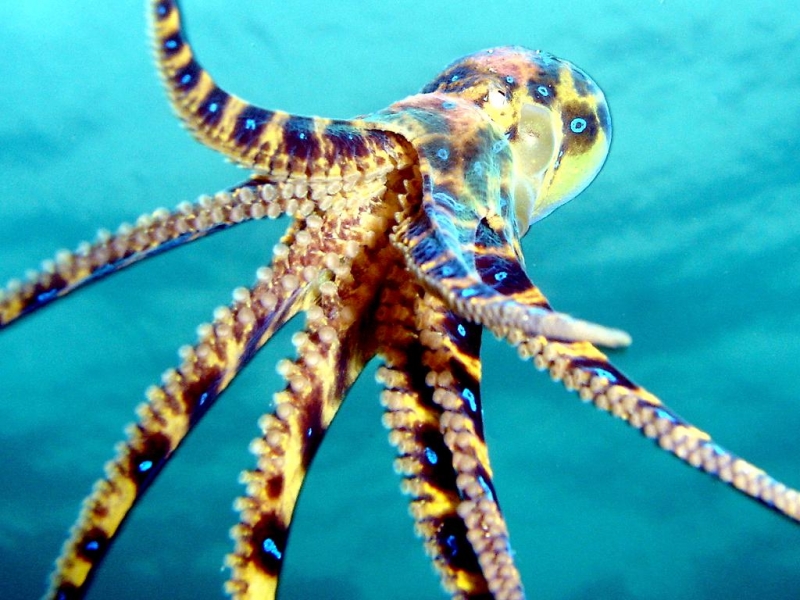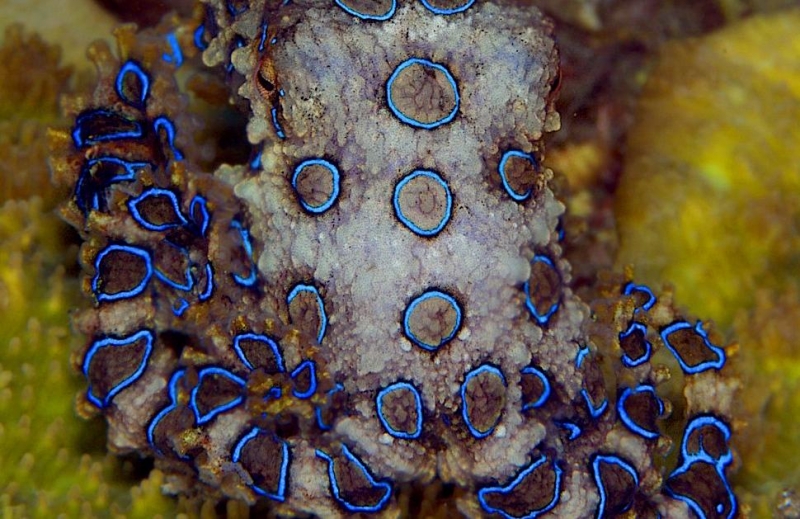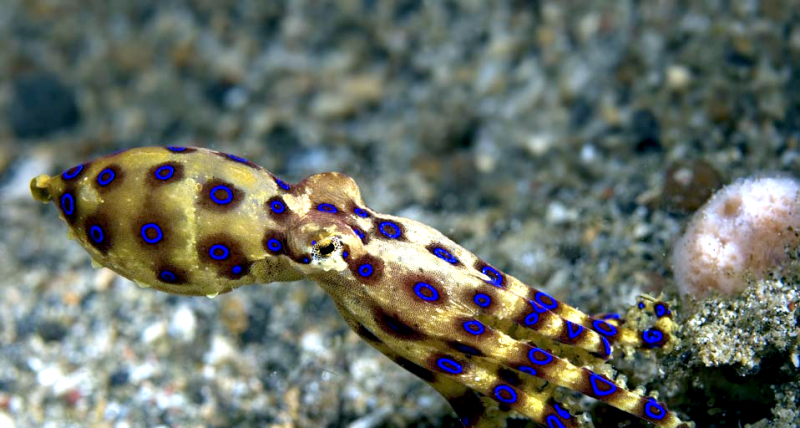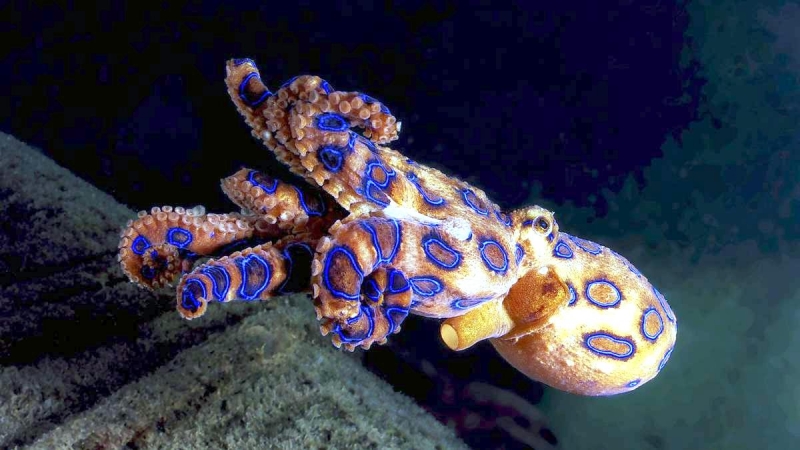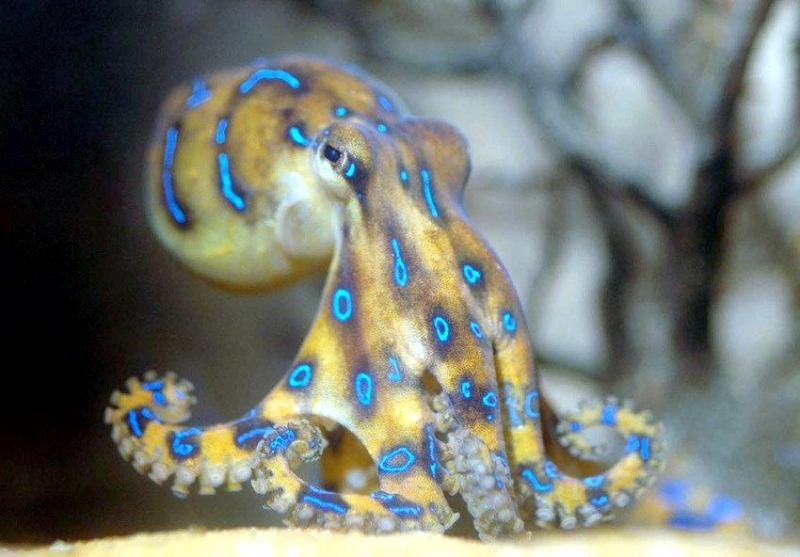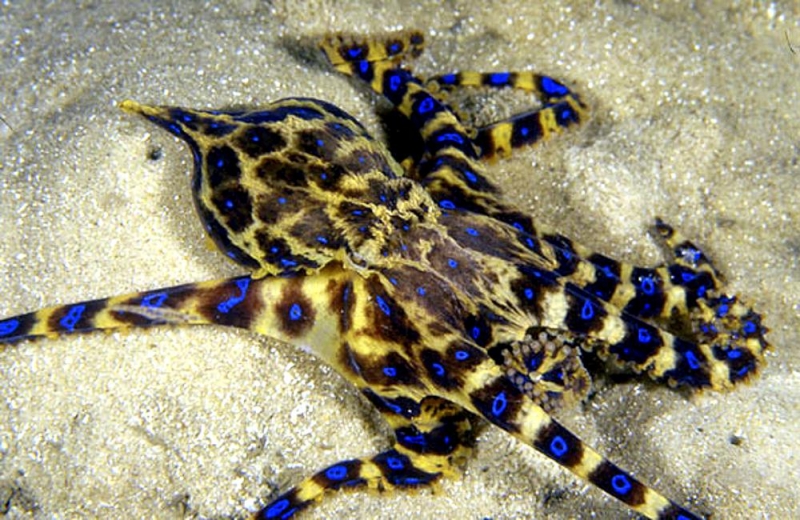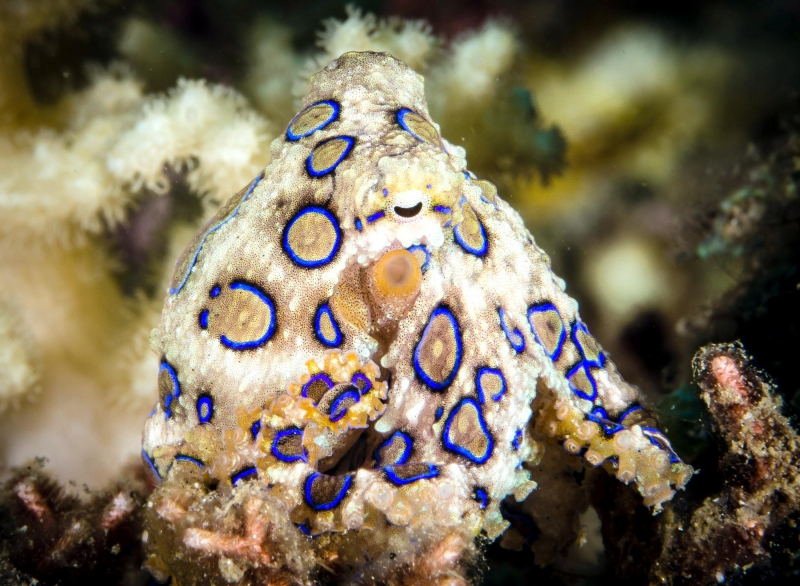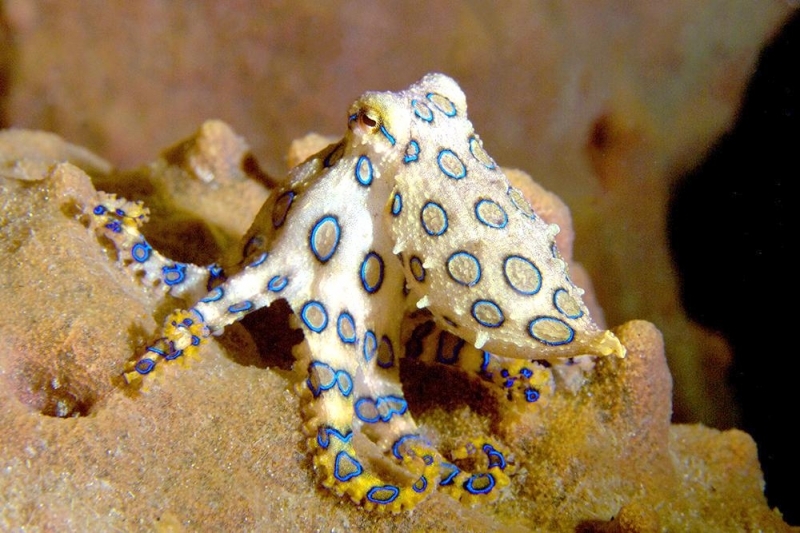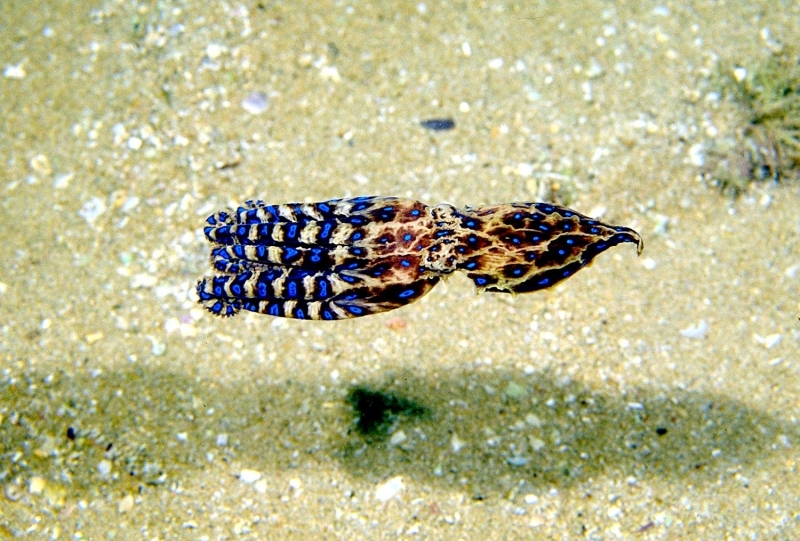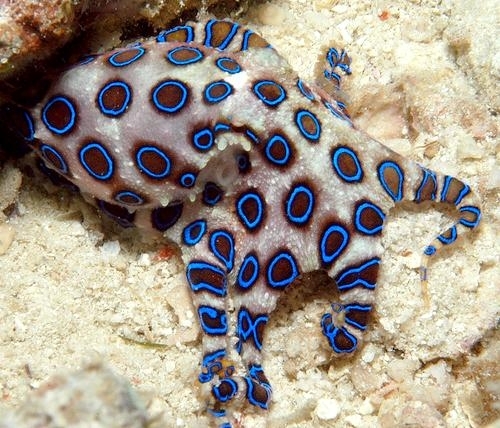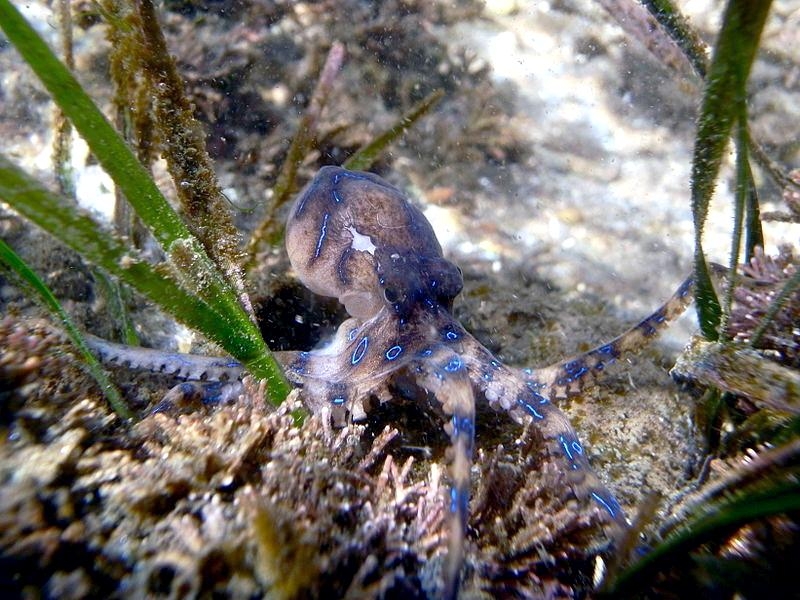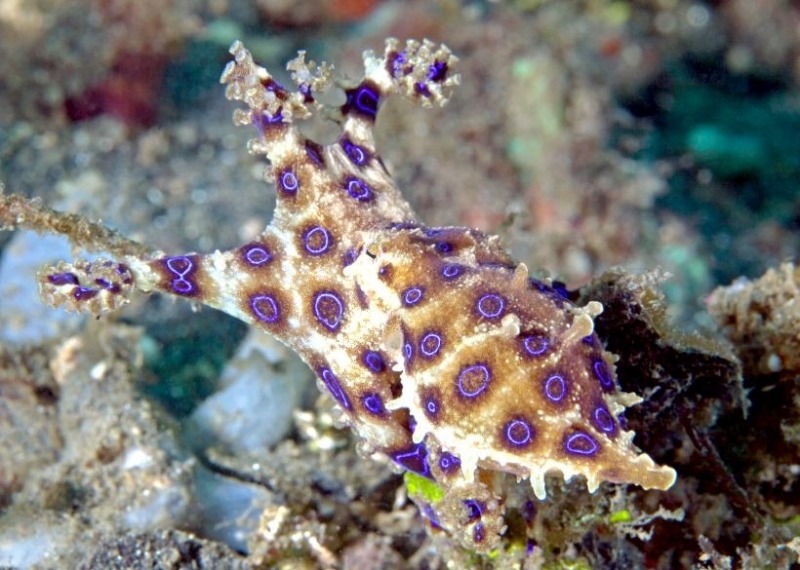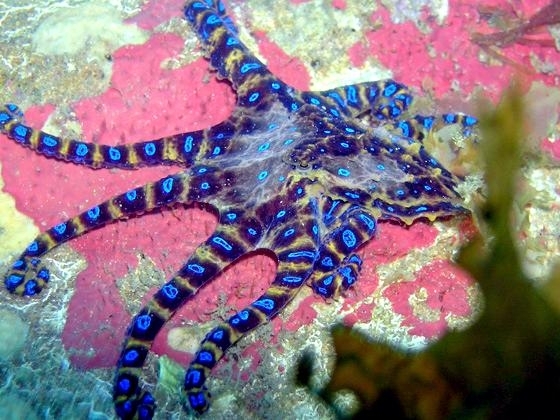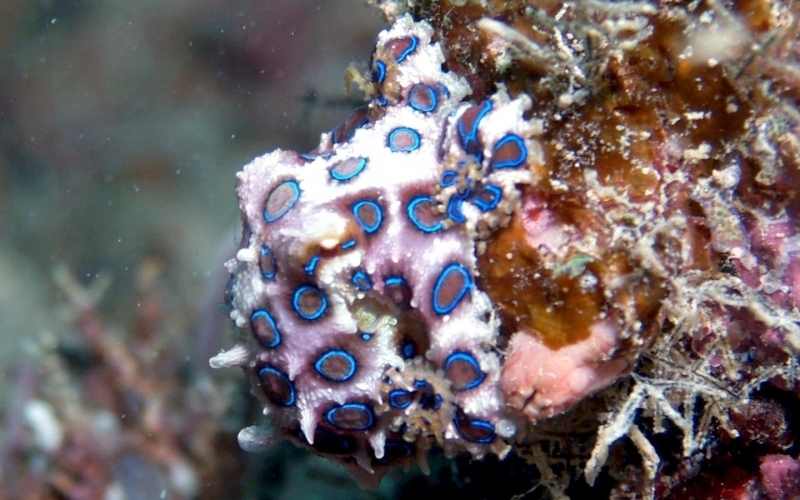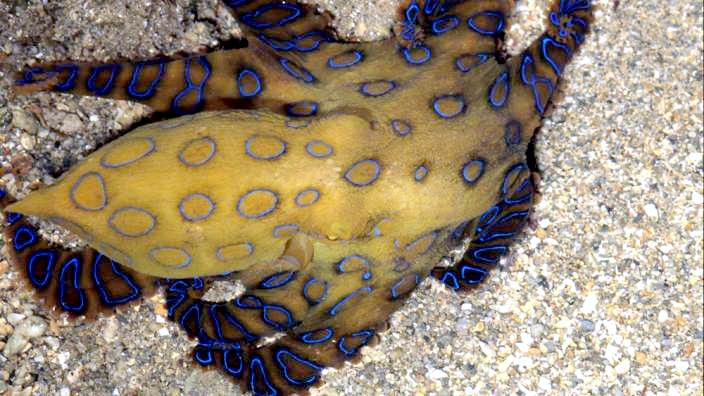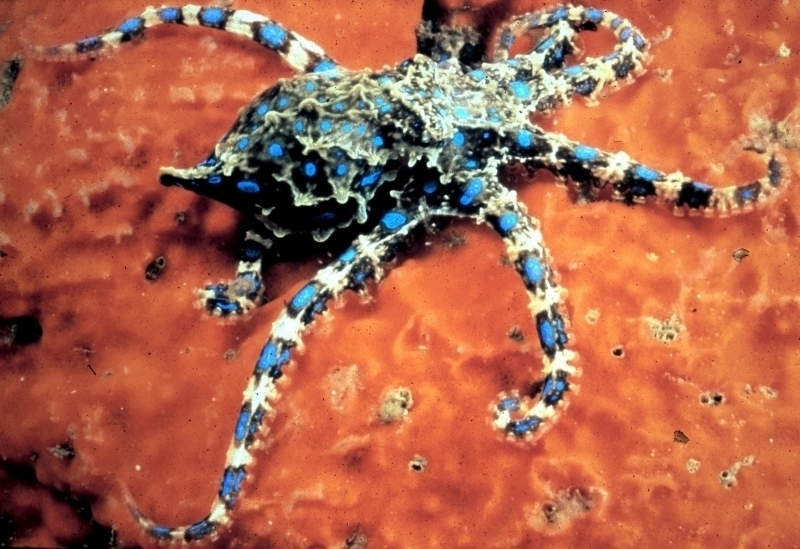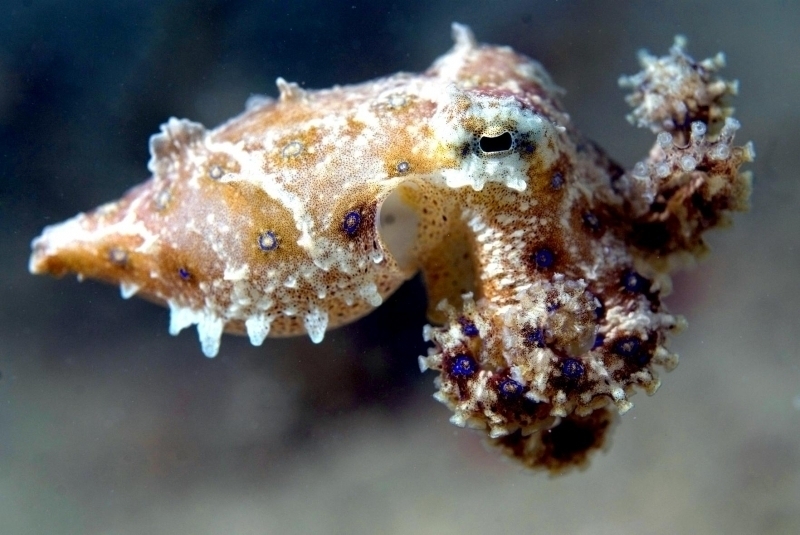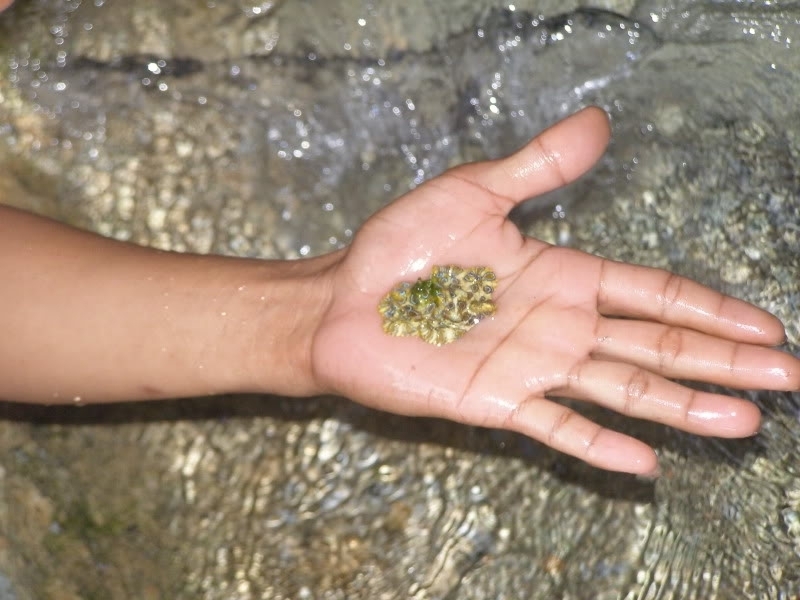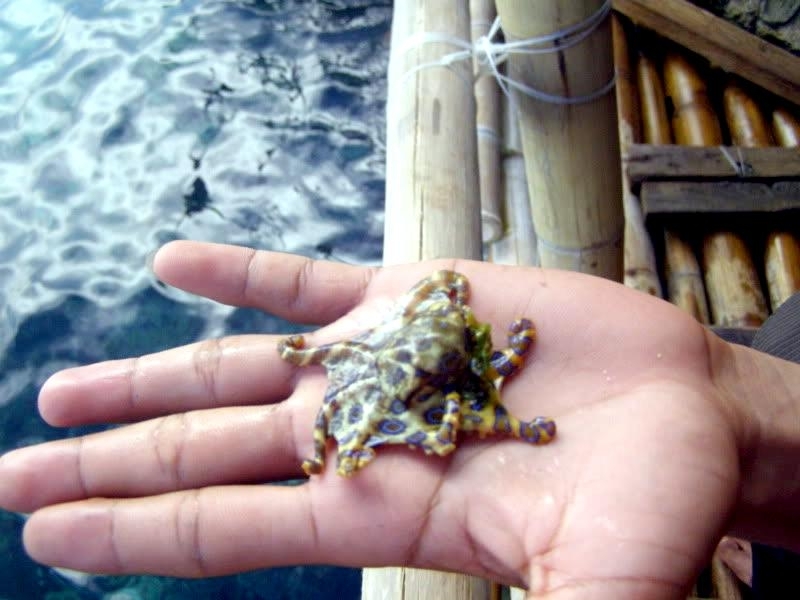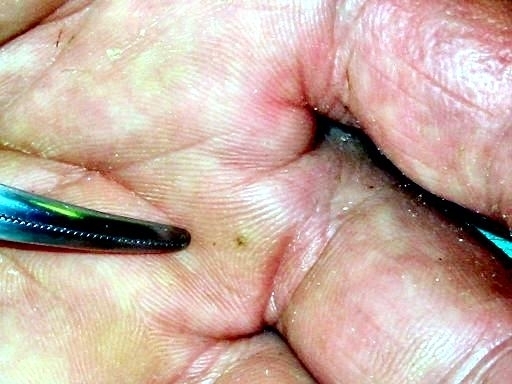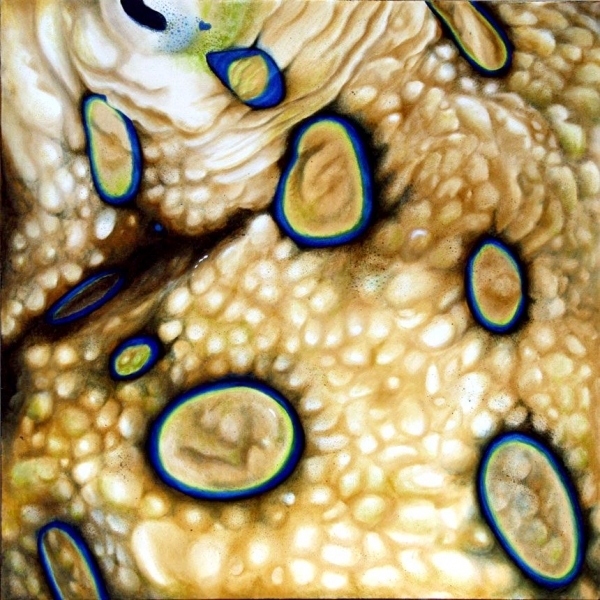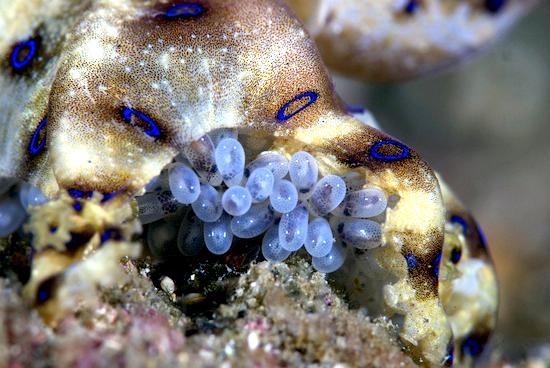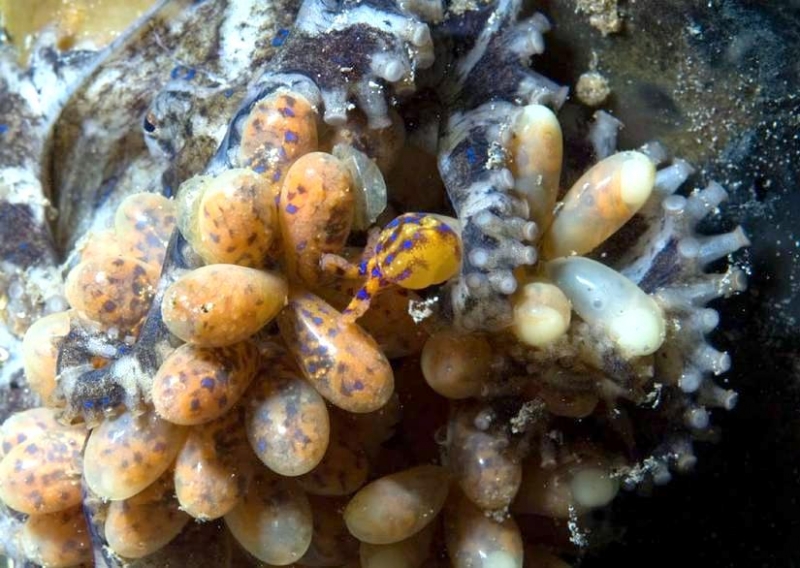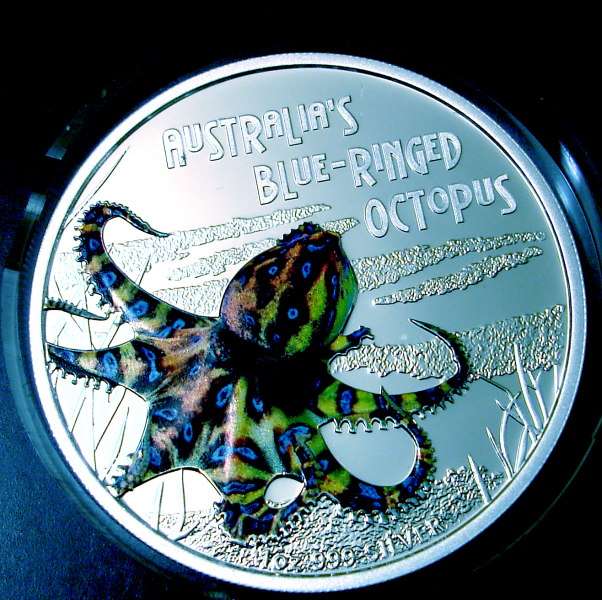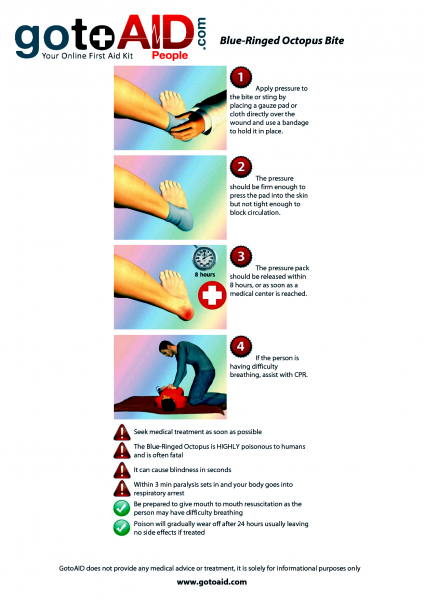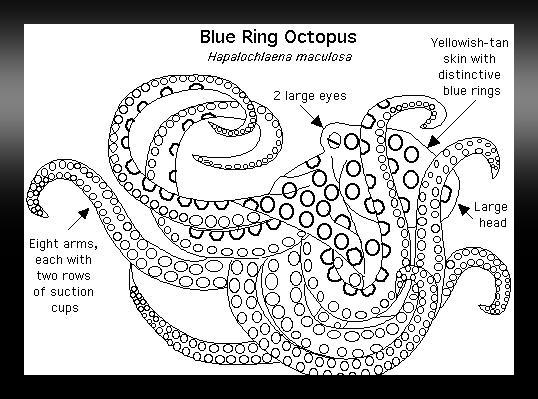“Hapalochlaena lunulata”
The tiny Blue-ringed Octopus which ironically for their size, are the most deadly of all cephalopods. The common name comes from the bright-blue rings that appear when they are alarmed. The name Octopus came from the Greek okto (eight) and pous (foot). The Blue-ringed Octopus have small bodies 5 centimeters long and arms to 7 centimeters across the tentacles from tip to tip. Their surfaces are often covered with numerous papillae (a small projecting body part similar to a nipple in form), giving it a rough texture. Large iridescent blue rings hence their name, cover the dorsal (upper) surfaces of their mantle and web and extend out their arms. Rings on their mantle are up to 8 millimeters in diameter and number fewer than 25. There is a characteristic short, horizontal iridescent blue line that runs through their eyes. When at rest, faint, thin blue rings are usually visible. While resting, the Blue-ringed Octopus is a pale brown to yellow color depending on its surroundings. When alarmed, the octopus displays bright blue rings all over its body and carries enough venom to kill 26 adult humans within minutes. Blue-ringed Octopuses can be found only in the temperate waters of southern Australia, from southern Western Australia to eastern Victoria at depths ranging from 0-50 meters. They can be found in shallow reefs & tide pools from northern Australia to Japan, including Papua New Guinea, Solomon Islands, Philippines & Indonesia and as far west as Sri Lanka at depths ranging from 0-20 meters.
Blue-ringed Octopuses feed on small crabs, hermit crabs & shrimp that it hunts during the day. There are 2 types of venom secreted by 2 separate venom glands which are used against prey & predators. One of the venoms is used for hunting crab, the other which is extremely toxic, is used as self-defense against predators. The venoms are secreted into the Blue-ringed Octopus’s saliva, but the mechanism for poisoning its victim is not well understood. Either the venom is expelled in the saliva into the water or the octopus bites its prey or predator. Once the prey is dead, the Blue-ringed Octopus begins consuming it with its powerful beak-like mouth. The mating ritual for Blue-ringed Octopus begins when a male approaches a female and begins to caress her with his modified arm, the hectocotylus. Males then climb on the females back, at times completely engulfing the female’s mantle obstructing her vision. The hectocotylus is inserted under the mantle of the female and spermatophores are released into the female’s oviduct. The female then lays between 50-100 eggs and guards them by carrying them under her tentacle until they hatch about 50 days later into plank-tonic paralarvae. The female then dies as she is unable to eat while she guards her eggs. The Blue-ringed Octopus is about the size of a pea when hatched, then grows to reach the size of a golf ball as an adult. Both sexes mature quickly and begin mating the following autumn. The male dies after mating. All octopuses along with squids & cuttlefishes have a short lifespan of about 2 years.
